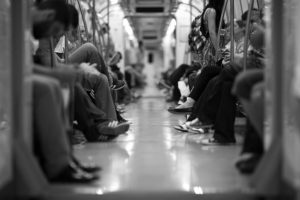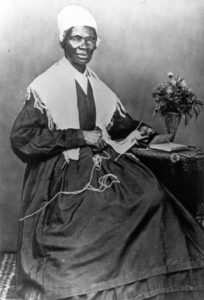The Plight of Mega Commuters
 I was talking to my friend Charlene the other day. She and her family recently moved to Poughkeepsie, NY. This is the third time she has moved in five years. She works as a medical billing specialist in a Manhattan hospital.
I was talking to my friend Charlene the other day. She and her family recently moved to Poughkeepsie, NY. This is the third time she has moved in five years. She works as a medical billing specialist in a Manhattan hospital.
Charlene was born and raised in Brooklyn but was forced to move out in 2013 due to the housing crunch and gentrification. Her commute to work on the subway from Brooklyn took 20-30 minutes. She moved to Flushing, Queens and lived there for about a year and a half until her landlord sold her building and the new owners doubled the rent. Her commute from Flushing to midtown Manhattan on the subway also doubled to 40-60 minutes.
She then moved to New Rochelle and her commute actually improved a little, as she was able to take the Metro-North into Manhattan in about 35 minutes, but she had to take a bus, Uber or have someone drop her off at the train station, which was a 10-minute drive. Unfortunately, her husband’s job was downgraded to a part-time position, which meant a lower salary. This summer Charlene, her husband, and three kids decided to move to Poughkeepsie into an affordable housing unit. Charlene’s commute to Manhattan is now two hours. She had thought of getting another job, but she says that she now has seniority at the job with good benefits, and if she took another job in her field, she would have to start at a lower salary and work her way up again like an entry-level employee. Her job also requires her to be a New York resident, so moving to New Jersey or Connecticut is not an option.
This is the plight of a growing number of Americans who are considered by the U.S. Census Bureau to be “mega-commuters” – those who commute more than 90 minutes and 85 miles one way to work regularly. According to the Bureau’s report, there are 600,000 mega-commuters throughout the country. If you include people who commute at least an hour each way, that number jumps to 10.8 million, or a little over 8 percent of U.S. workers.
While telecommuting is on the rise, there are still going to be jobs that require workers to be in a designated workplace, which can be many miles or another city or state away. Why is this happening? Most of these mega-commuters are being forced to live further away from major metropolitan areas because of raising property rates, which also cause higher rental rates. Many low to middle-income people are being forced to live further away from their jobs. This is a very unfair, unfortunate result of gentrification.
I remember having a job once when I was younger where my commute was two hours. I didn’t own a car, so I had to take one bus for 20 minutes, a subway ride for 40 minutes and then the commuter rail for 20 minutes and another bus for 20 minutes to this job west of Boston. It was one of my first jobs out of college and couldn’t afford a car and Uber wasn’t around back then. I needed the job not just because it was good money for an entry-level person, but also because it would help leverage my resume for a better job. That better job closer to home did come about a year later, but this was a grueling commute. Today, I am very lucky that I am self-employed and can telecommute, but what about the other mega-commuters?
Clearly, there needs to be a serious discussion about regulating housing rates for all households, regardless of income, but this is also an infrastructure issue as well. If this country had better mass transit options, especially for intercity rail systems, maybe commutes could be shorter and more efficient.


